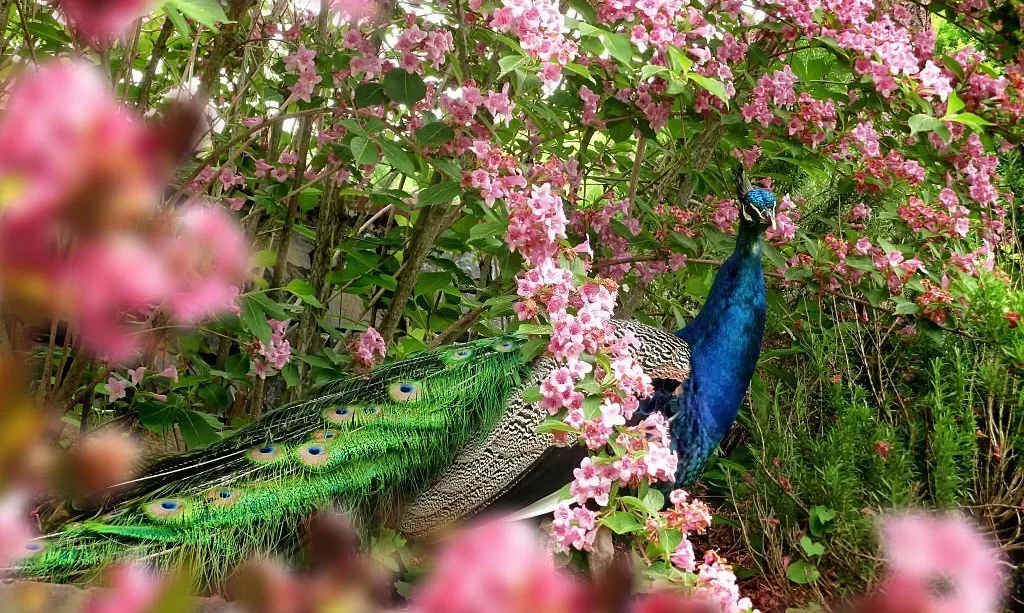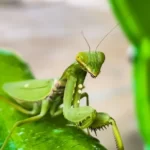The allure of peacocks with their striking plumage and regal presence is undeniable. These magnificent birds, known for their vibrant iridescent feathers and melodious calls, have fascinated humans for generations. While peacocks are cherished for their beauty and symbolism in various cultures, there are circumstances where their presence can become a source of concern. In this article, we explore the fascinating world of peacocks and the need for responsible management in certain situations. Understanding these creatures and finding a harmonious way to coexist is key to addressing potential challenges associated with their presence.
- Made in USA
- UV Treated
- 600-650 lb breaking load
- Mesh: 1.77 in x 1.97 in
- Exclusive rounded tensile design
Peacocks
Peacocks, scientifically known as Indian Peafowls, are large and colorful birds belonging to the pheasant family. These birds are renowned for several distinctive characteristics:
- Physical Appearance: The male peacock, called a “peafowl,” is known for its resplendent, fan-shaped tail feathers, or “train,” which can extend over five feet long. These feathers are adorned with stunning iridescent patterns and vibrant hues, including blues and greens.
- Behavior and Social Structure: Peafowls are social birds that often gather in flocks. Males are known for their spectacular courtship displays, which involve fanning their tail feathers and emitting a series of vocal calls to attract females. Peacocks are diurnal birds, being most active during the day.
- Diet and Habitat: Peafowls are omnivores, feeding on a variety of foods, including insects, seeds, fruits, and small animals. They are adaptable birds and can thrive in various habitats, including forests, grasslands, and cultivated areas.
- Conservation Status: Indian Peafowls are not considered threatened or endangered. In fact, their populations are quite stable and even increasing in some regions. They are also culturally significant in many countries.
While peacocks are appreciated for their natural beauty and symbolism in art, mythology, and culture, they can also become a source of concern in certain situations. Understanding their biology and behavior is essential in addressing any challenges associated with their presence in specific environments.
Assessing the Need for Management
Before implementing any management strategies for peacocks, it’s essential to assess whether management is genuinely necessary in your specific situation. Consider the following factors:
- Context and Location: Where are the peacocks causing issues? Are they disturbing residential areas, gardens, or agricultural fields? Understanding the context is crucial.
- Frequency and Intensity: How often do these birds cause problems, and how severe are those issues? Occasional visits may not warrant management, while persistent and intense presence might.
- Impacts on Human Activities: Consider the impact of peacocks on human safety, health, and comfort. Assess situations where their presence poses potential hazards or disruptions to daily life.
Non-Lethal Methods for Peacock Management
If the need for peacock management is established, it’s important to focus on non-lethal and humane methods. Here are several strategies for managing peacocks while respecting their well-being:
- Physical Barriers: Installing fences or netting around areas where peacocks are causing problems can be an effective solution. Ensure that the barriers are sufficiently high (peacocks are excellent fliers) and provide an escape route if they accidentally get trapped.
- Visual Deterrents: Scaring peacocks away using visual deterrents like reflective objects, scarecrows, or devices that create sudden movement or noise can discourage them from frequenting specific areas.
- Environmental Modification: Modify the environment to make it less attractive to peacocks. This may involve eliminating potential food sources like spilled birdseed or fruits and addressing any accessible water sources.
- Humane Hazing Techniques: Utilize humane hazing techniques, such as gentle water sprays or noise deterrents, to encourage peacocks to relocate to a more suitable habitat.
These non-lethal methods aim to deter or manage peacocks while preserving their well-being and the harmonious coexistence of these birds with humans. It’s important to remember that harming or killing peacocks is generally not an ethical or effective solution and should be avoided. The focus should be on finding responsible and humane ways to address any issues that may arise due to their presence.
Legal and Ethical Considerations
When managing peacocks, it’s crucial to adhere to legal and ethical considerations. These include:
- Local Regulations: Research and adhere to any local laws and regulations regarding the treatment of peacocks. In some regions, they may be protected or subject to specific guidelines.
- Ethical Treatment: Recognize that harming or killing peacocks is generally not an ethical or effective solution. Ethical considerations should guide all management efforts, focusing on peaceful coexistence and humane practices.
Coexistence and Education
Promoting coexistence and understanding the value of peacocks is essential. This involves:
- Respect for Nature: Encourage respect for the natural world and its inhabitants. Recognize that peacocks, as part of our ecosystem, contribute positively to our environment.
- Community Involvement: Engage with your community to collectively address any concerns related to peacocks. This can involve education and awareness programs, as well as cooperative efforts to manage potential issues.
- Education: Educate the public about the behavior and needs of peacocks. Understanding their role in the ecosystem and their cultural significance can foster empathy and appreciation.
Conclusion
Peacocks, with their striking beauty and unique presence, are creatures of fascination and cultural significance. While they often bring joy and aesthetic delight, there are times when responsible management is required to address issues in specific contexts. Understanding the biology and behavior of peacocks, assessing the need for management, and implementing non-lethal and ethical methods can help strike a balance between the presence of these magnificent birds and human activities.
In the spirit of coexistence, it is crucial to respect legal and ethical considerations, preserving the well-being of peacocks and the harmony between nature and human communities. Ultimately, a thoughtful and balanced approach ensures that we can continue to appreciate and coexist with these remarkable birds, preserving their role in our environment while addressing any challenges that may arise.




